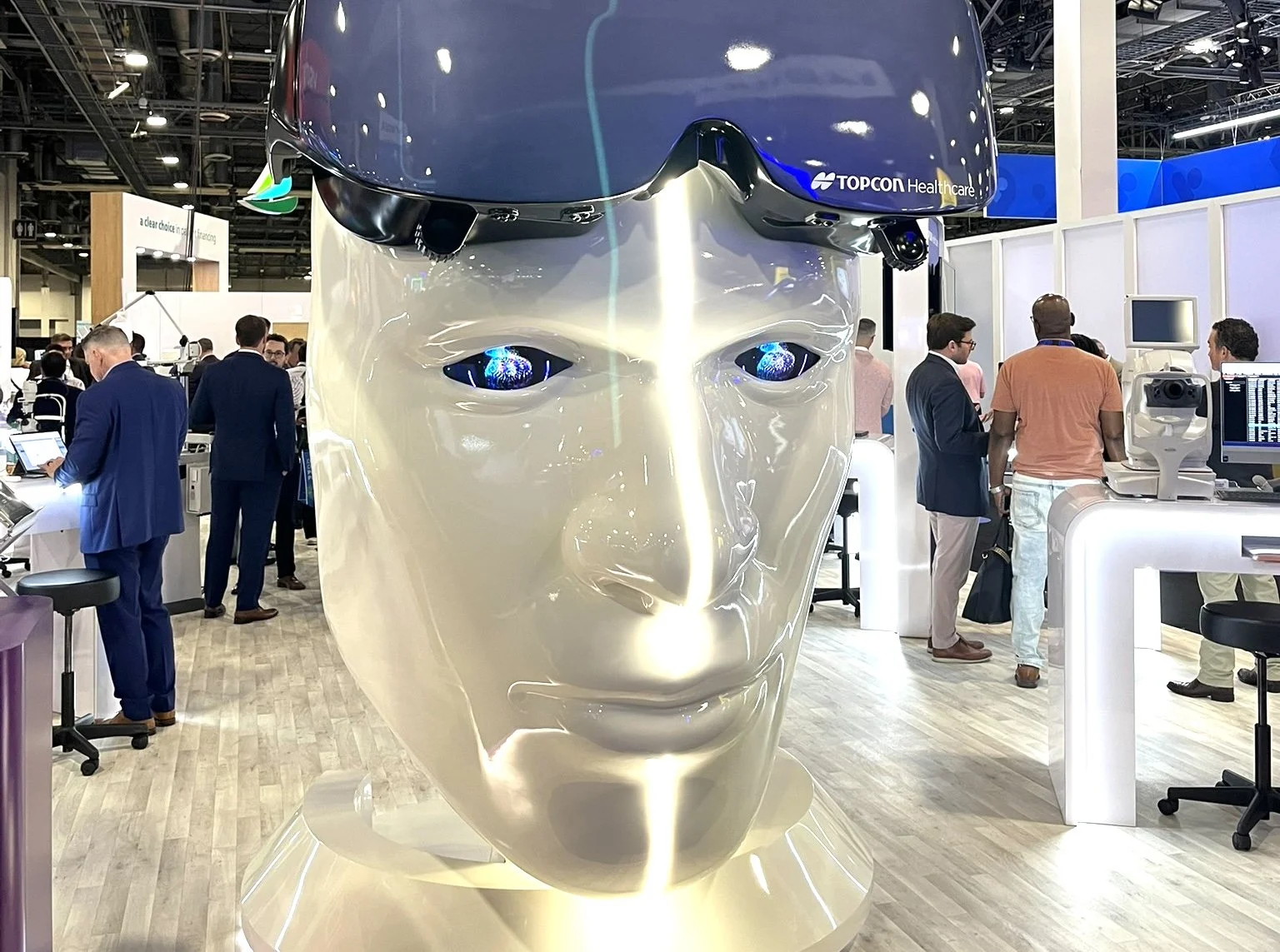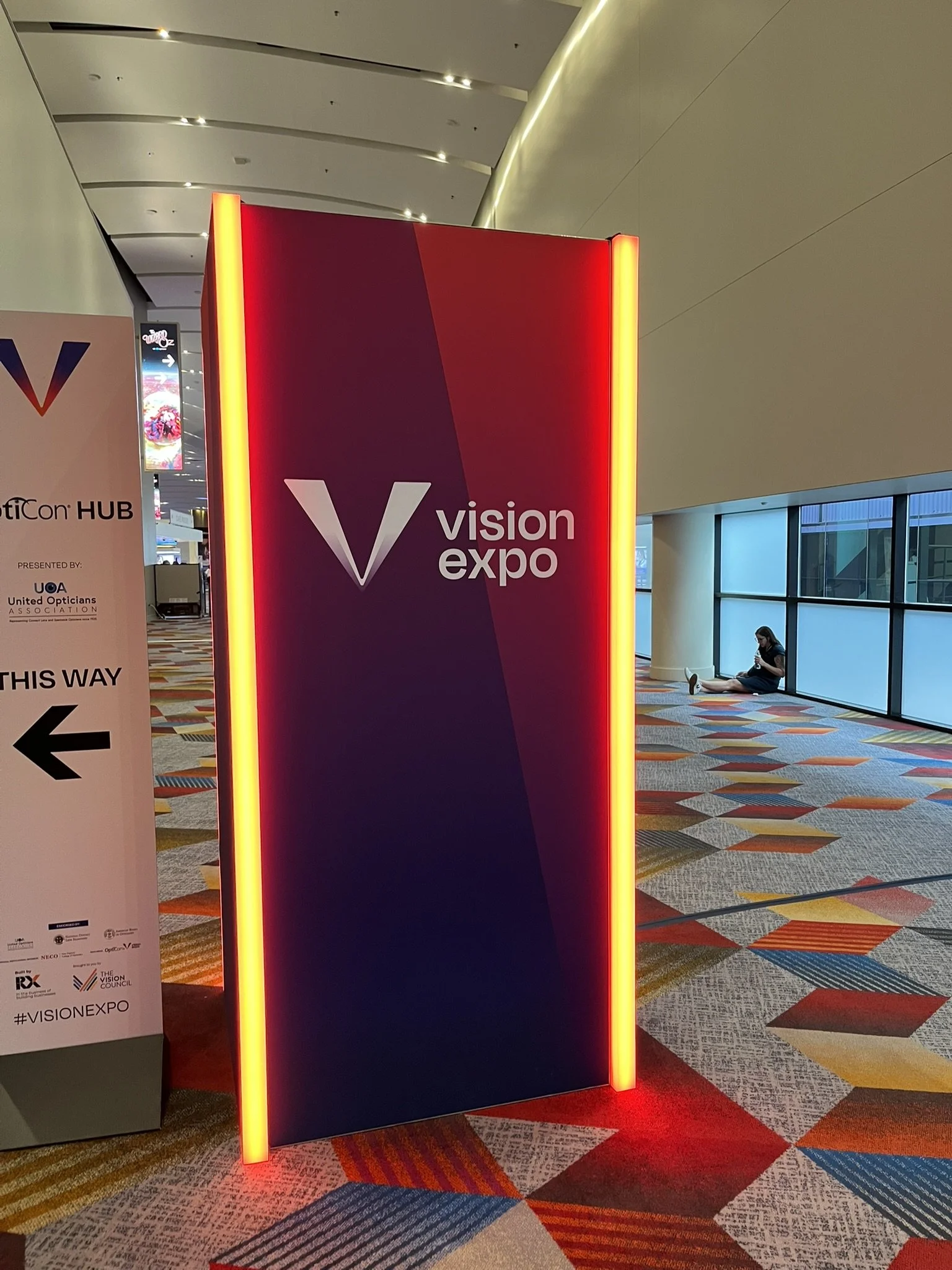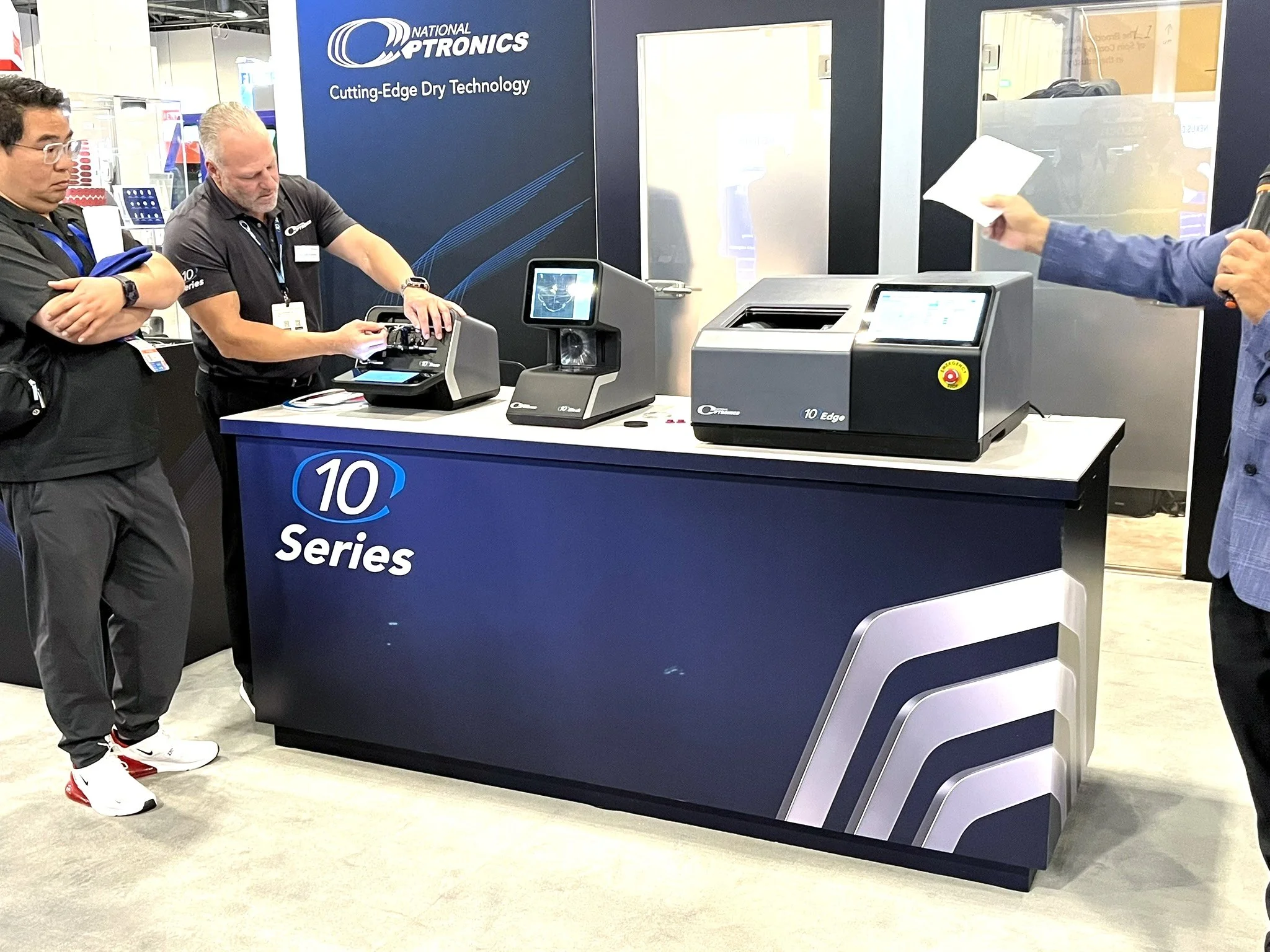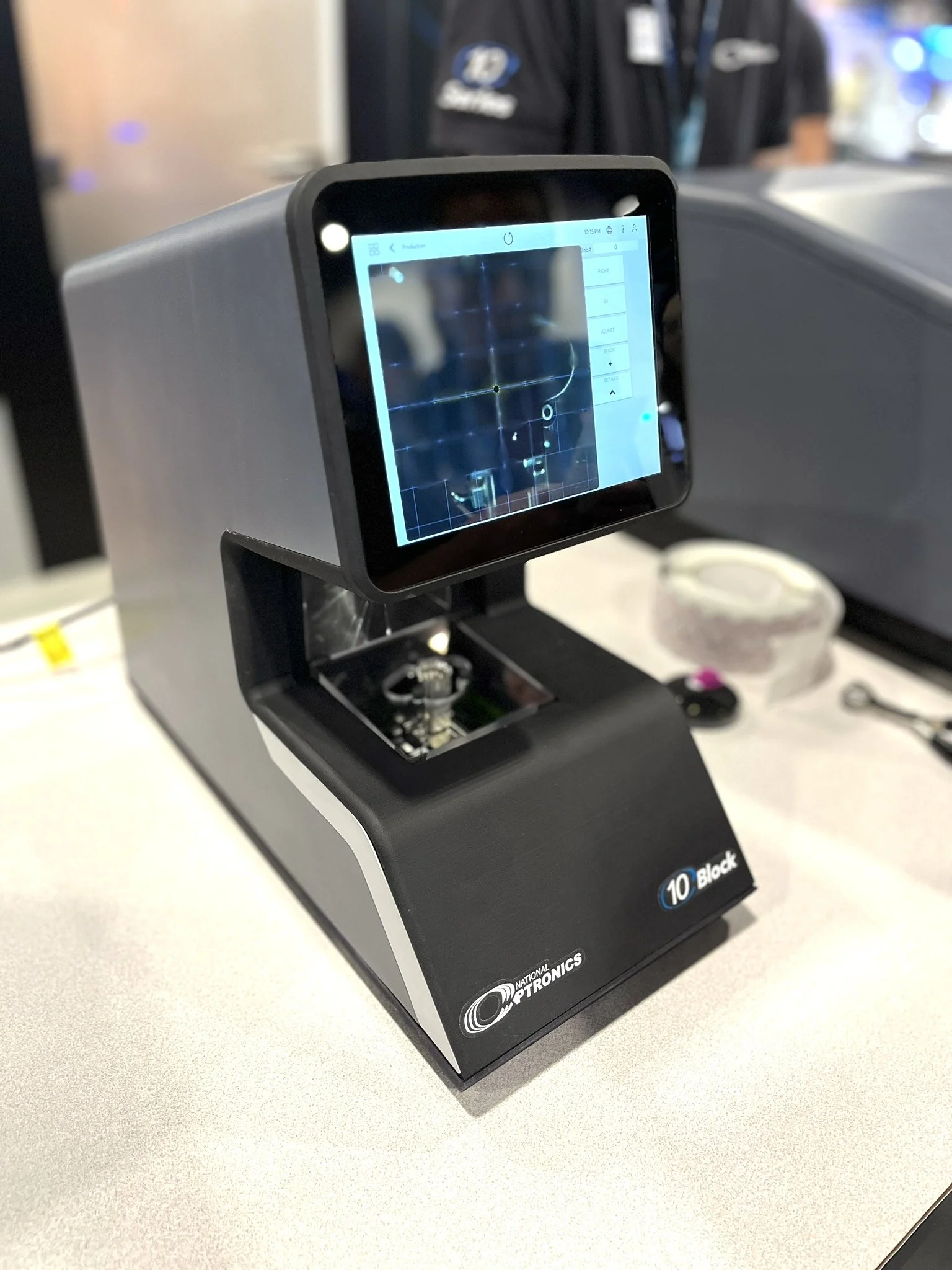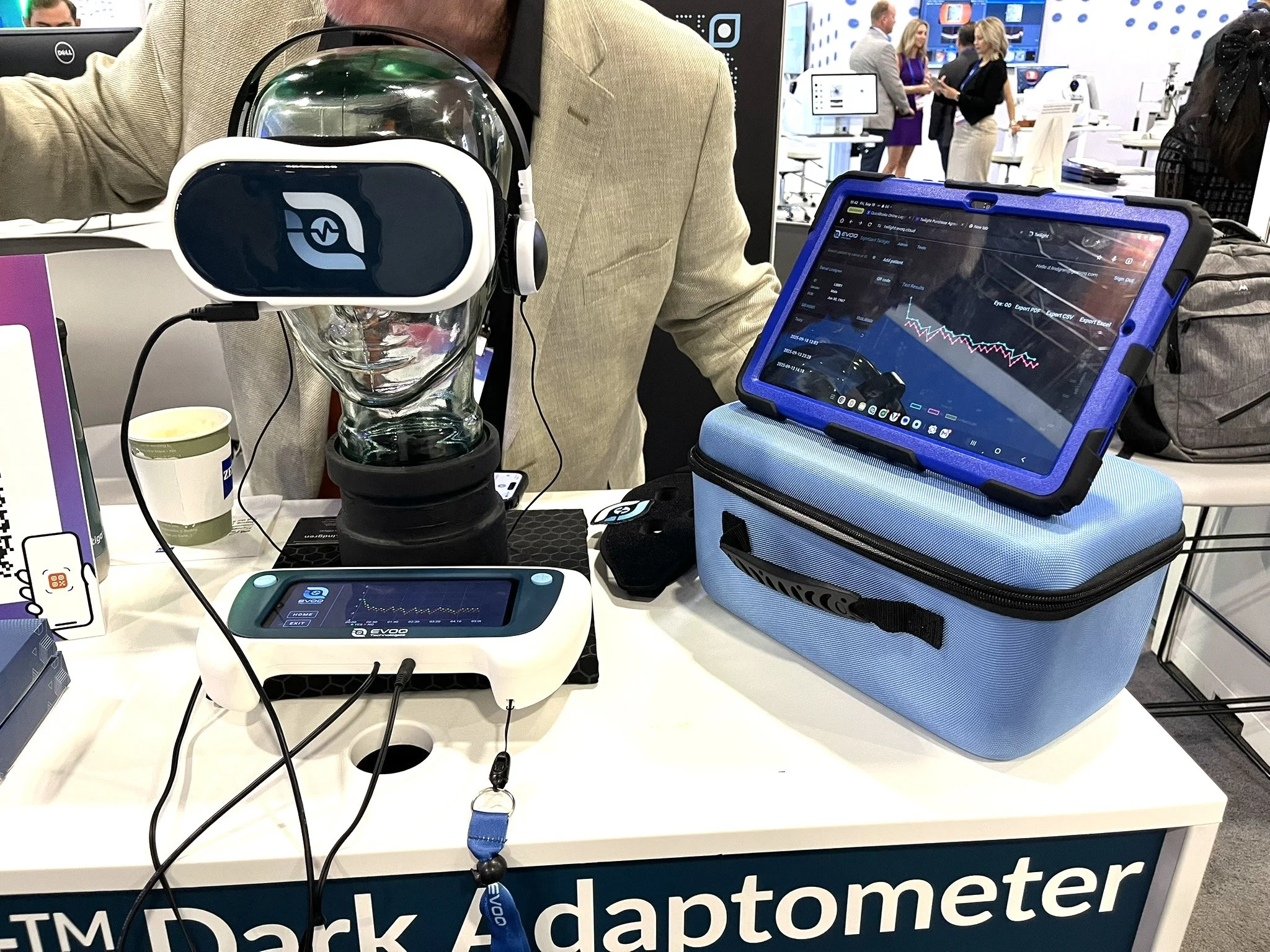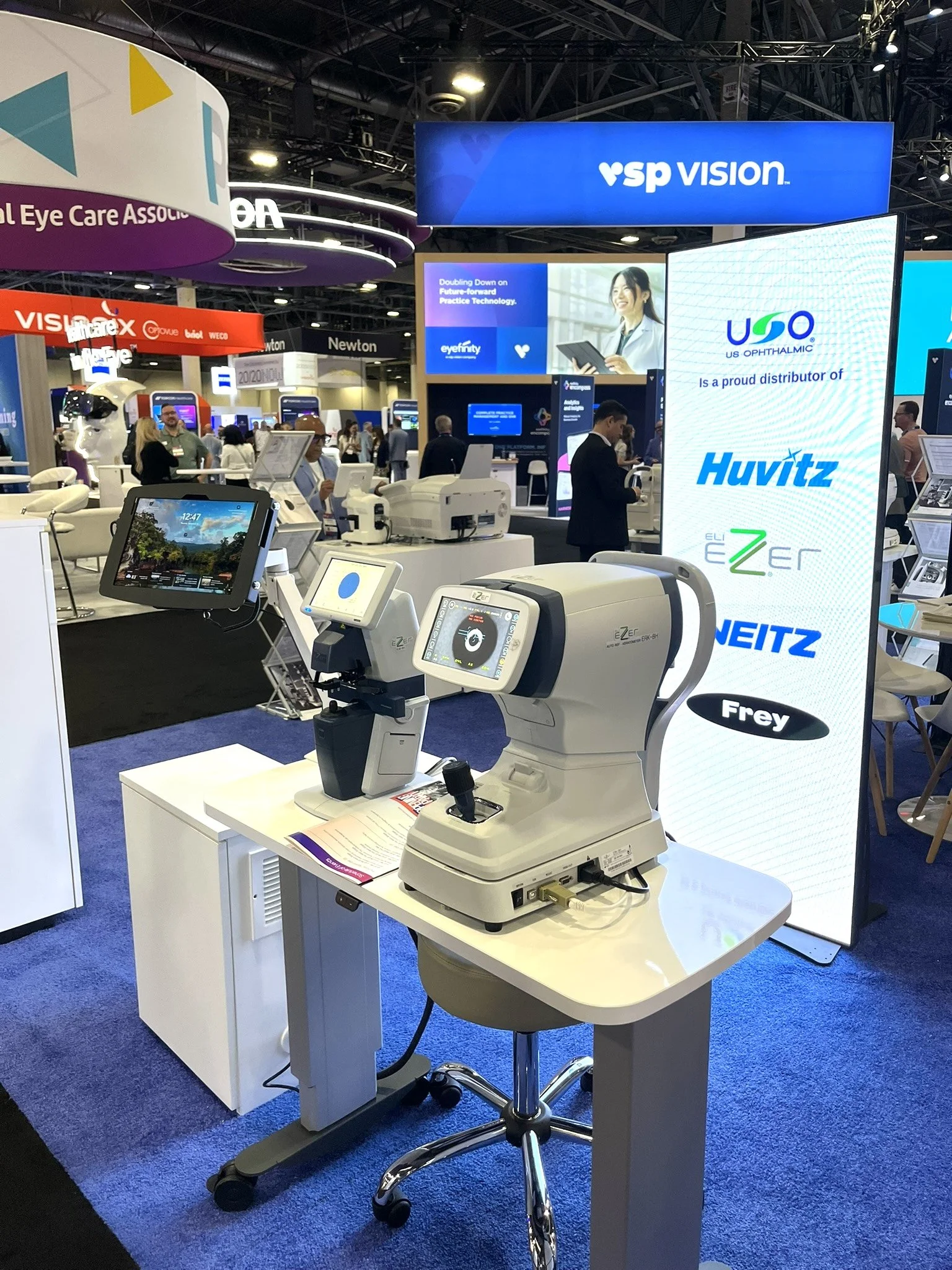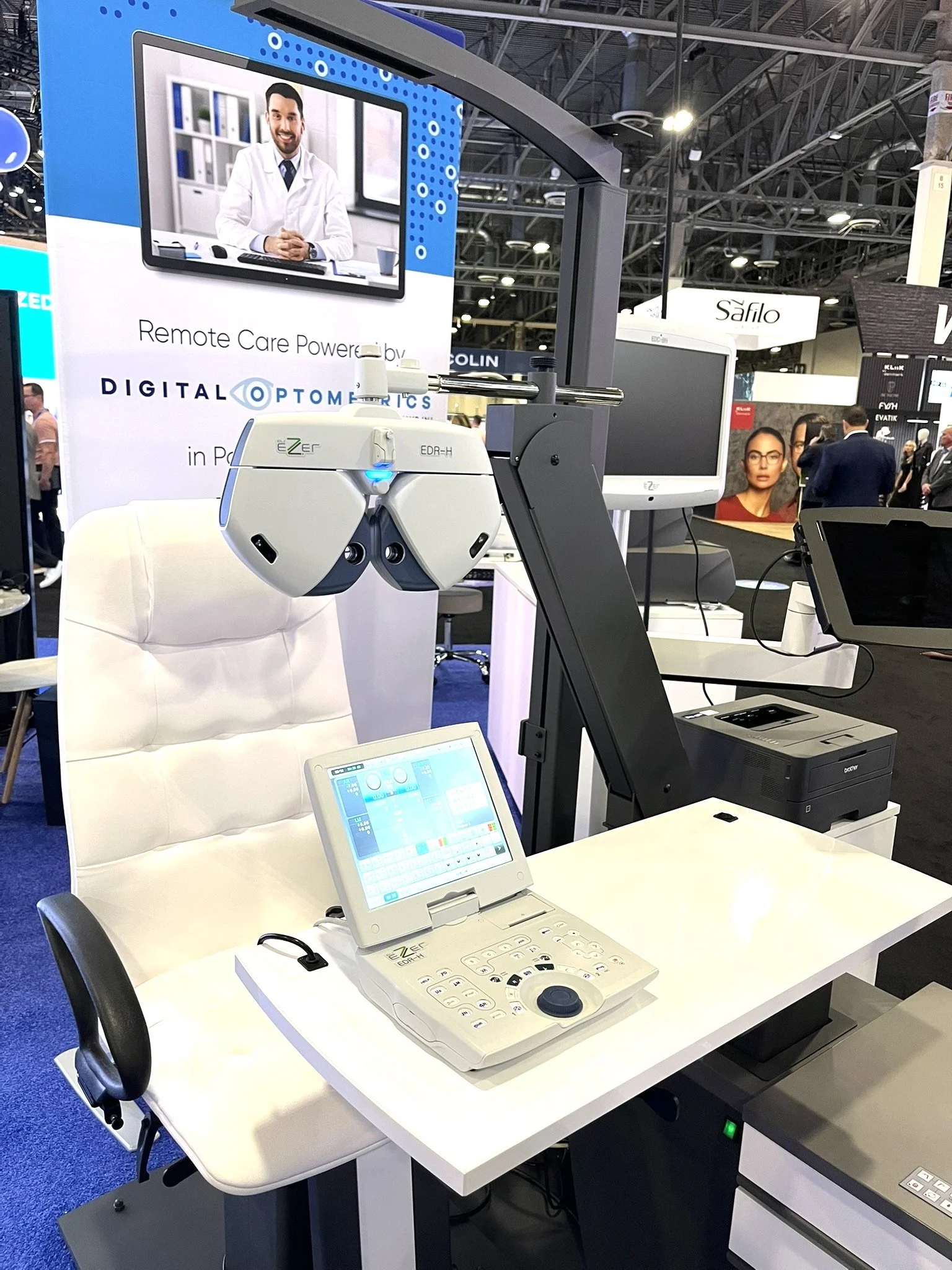Vision Expo West has been around longer than I’ve been in the industry, but this year was my first time attending, and it was well worth the trip to Vegas. The show is known for its cutting-edge eyewear designs, but what really impressed me was the technology shaping the optometry industry as a whole. From tools addressing staffing shortages with remote care capabilities to fully automated lines producing custom lenses, exhibitors were tackling a wide range of challenges head-on.
We were also there to see some of SPARK’s latest work with Satisloh (a subsidiary of EssilorLuxottica) as they launched the 10Series, which includes a new tabletop Edger, Blocker and Tracer.
While our Senior Mechanical Engineer, Fred Dewees, has been involved with these products for more than 15 years, it was my first time seeing them in person and hearing the Satisloh team’s enthusiasm about unveiling the 10Series to their customers.
The Launch Pad, a section of the expo featuring startups and emerging companies, offered a glimpse into the next wave of innovation. Fred and I stopped at several booths showcasing exciting ideas: a wearable diagnostic that quantifies dark adaptation loss (an early indicator of degenerative retinal diseases), a steam goggle designed to relieve dry eyes, and even a prototype wearable that compensates for blind spots caused by macular degeneration.
What do you get when you combine fashion, wearable tech, and engineering efficiency? Vision Expo. The event offered a fascinating look at how optometry is evolving. Soon, many of us may begin to see new technologies rolled out in their local optical/optometry offices. Patients might visit a small office staffed by just one or two people and connect remotely to a doctor hundreds or even thousands of miles away. Faster diagnoses and greater accessibility are clearly the name of the game in this ever-changing industry.
Fred’s take
This was my third Vision Expo, but the first time I’ve attended as part of SPARK rather than as an exhibitor. It completely changed my perspective.
As an exhibitor I was always focused on what our competitors were up to, what shiny new things they’d brought to the show, whether they were on to something, and how they were achieving the claims they made about any new equipment.
As an attendee, I noticed how much of the patient-facing equipment was just the same thing with a different label on it.
That sameness made the truly engineered innovations stand out. Everyone was selling a pachymeter, for example, but while most offered floor-standing all-in-one units, one company showcased a laptop-connected handheld device. That kind of outlier is exactly what catches SPARK’s attention.
Walking the floor with Philip (who has an eye for these outliers), we had real conversations about design, customer needs, and market placement. We talked to fellow attendees not just about what their companies were building, but why and how they brought those ideas from concept to prototype. It was a reminder of why we love what we do: helping turn inventive ideas into real, reliable products that push industries forward.
Why it matters
Events like Vision Expo are a reminder of what keeps this work exciting. The ideas and products on display, from startups to industry leaders, show how design and engineering can directly improve the way people receive care. Great engineering doesn’t just advance technology. It improves care, accessibility, and the experience for everyone along the way.


